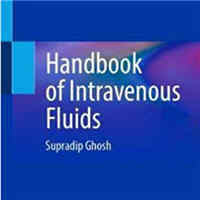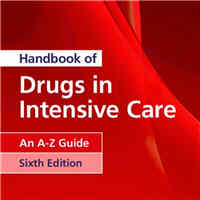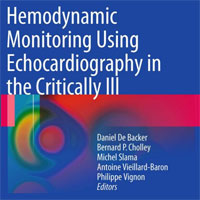Tag: treatment
Guidelines for the Management of Pediatric Severe Traumatic Brain Injury
Update of the Brain Trauma Foundation Guidelines, Third Edition. Severe Traumatic Brain Injury in Infants, Children, and Adolescents in 2019: Some Overdue Progress, Many Remaining Questions, and Exciting Ongoing Work in the... read more
ECMO in the Critical Trauma Patient
Growing evidence suggests the potential use of Extracorporeal membrane oxygenation (ECMO) for the treatment of refractory respiratory failure in adults, but the clinical benefit in polytraumatic patients is not clear. The... read more
How Artificial Intelligence Can Make Healthcare Human Again
Medicine has become inhuman, to disastrous effect. The doctor-patient relationship, the heart of medicine, is broken: doctors are too distracted and overwhelmed to truly connect with their patients, and medical errors and... read more

Potassium Homoeostasis and Pathophysiology of Hyperkalaemia
Since determination of potassium levels may be afflicted with various errors, potassium levels should be determined using a standardized set-up ensuring high accuracy and precision of measurements. Potassium levels may be... read more
Procalcitonin Reduces Antibiotic Use with No Negative Outcomes
The elderly patient presenting to the ED with nonspecific symptoms remains a diagnostic and therapeutic challenge. Often, these patients arrive with general complaints ranging from altered mental status to weakness, subjective... read more
Catheter Directed Thrombolysis for Intermediate Risk Pulmonary Embolism
Intermediate risk pulmonary embolism is common and carries a risk of progression to hemodynamic collapse and death. Catheter directed thrombolysis is an increasingly utilized treatment option, based largely on the assumptions... read more
Antibiotic timing in Severe Sepsis
Severe sepsis is a time dependent condition and this study builds on previous literature which supports that early identification and treatment of sepsis with antibiotics decreases mortality. Retrospective analysis of a large... read more
Number Needed to Treat
Effectively communicating clinical trial results to patients and clinicians is a requirement for appropriate application in clinical practice. In a recent issue of JAMA, Zhao et al1 reported the results from a randomized... read more
Prehospital Intravenous Fentanyl Administered by Ambulance Personnel
Prehospital acute pain is a frequent symptom that is often inadequately managed. The concerns of opioid induced side effects are well-founded. To ensure patient safety, ambulance personnel are therefore provided with treatment... read more
Hypertriglyceridemic pancreatitis: Can we defuse the bomb?
Hypertriglyceridemia causes ~9% of pancreatitis, the third most common cause after alcohol and gallstones. It is a risk factor for severe pancreatitis, making it more frequent among ICU patients with pancreatitis. I see... read more
Antifungal Treatment in the ICU
Invasive fungal infections (IFIs) are a major cause of morbidity and mortality in critically ill patients. Almost 80% of IFIs are due to Candida spp., which are the third most common isolated microorganisms in the intensive... read more
Electrophysiological Investigations of Peripheral Nerves and Muscles
Resting trans-membrane potential difference (Em) of skeletal muscle is correlated to the energy status of the organism: the more severe the illness, the lower the Em. In 1971, Cunningham demonstrated this association with... read more
Hoopla Aside, hs-cTnI is Not Catching Missed Mis
We have been searching for a tool to identify myocardial infarction patients who are truly safe for discharge ever since Pope, et al., found that we were discharging two percent of patients with MIs from the emergency department.... read more
Aid Tool Does Not Help Care Decisions in Prolonged Mechanical Ventilation
Treatment decisions commonly have to be made in intensive care units (ICUs). These decisions are difficult for surrogate decision makers and often lead to decisional conflict, psychological distress, and treatments misaligned... read more
The Artificial Intelligence Clinician Learns Optimal Treatment Strategies for Sepsis in Intensive Care
Sepsis is the third leading cause of death worldwide and the main cause of mortality in hospitals but the best treatment strategy remains uncertain. In particular, evidence suggests that current practices in the administration... read more
Optimizing Patient and Family Education Resources for the ICU
Offering stronger patient and family education tools in the ICU will ease patient and caregiver fears and make them more comfortable with the care setting. An integrated, centralized, and digital platform is best suited for... read more
Metabolic Sepsis Resuscitation
There are roughly two strategies for adjusting the intensity of treatment: Titrated strategy: Treatment intensity is adjusted to match the severity of the disease. Escalation-deescalation strategy: Treatment intensity is... read more
Procedure Eases Complications Related to Fluid Around Lungs
As people live longer with more advanced stages of cancer or chronic diseases, the longer their complications must be treated. That can include pleural effusions, an unusually large amount of fluid around a person’s lungs... read more
Corticosteroid Treatment in Critically Ill Patients with Severe Influenza Pneumonia
Administration of corticosteroids in patients with severe influenza pneumonia is associated with increased ICU mortality, and these agents should not be used as co‑adjuvant therapy. A total of 1846 patients with primary... read more
Machine Learning Can Reduce Tests, Improve Treatments for ICU Patients
Researchers from Princeton University are using machine learning to design a system that could reduce the frequency of tests and improve the timing of critical treatments for ICU patients. To create the system, the researchers... read more
Vasodilatory Shock in the ICU and the Role of Angiotensin II
With the approval and release of angiotensin II, a new vasoactive agent is now available to utilize in these patients. Overall, the treatment for vasodilatory shock should not be a one-size fits all approach and should be... read more
Many Doctors Have Distorted Perceptions of the Value of Medical Tests
In 2014, the Canadian Task Force on Preventive Health Care recommended against the prostate-specific antigen (PSA) test used to screen for prostate cancer in healthy men, concluding that it results in substantial harms via... read more









